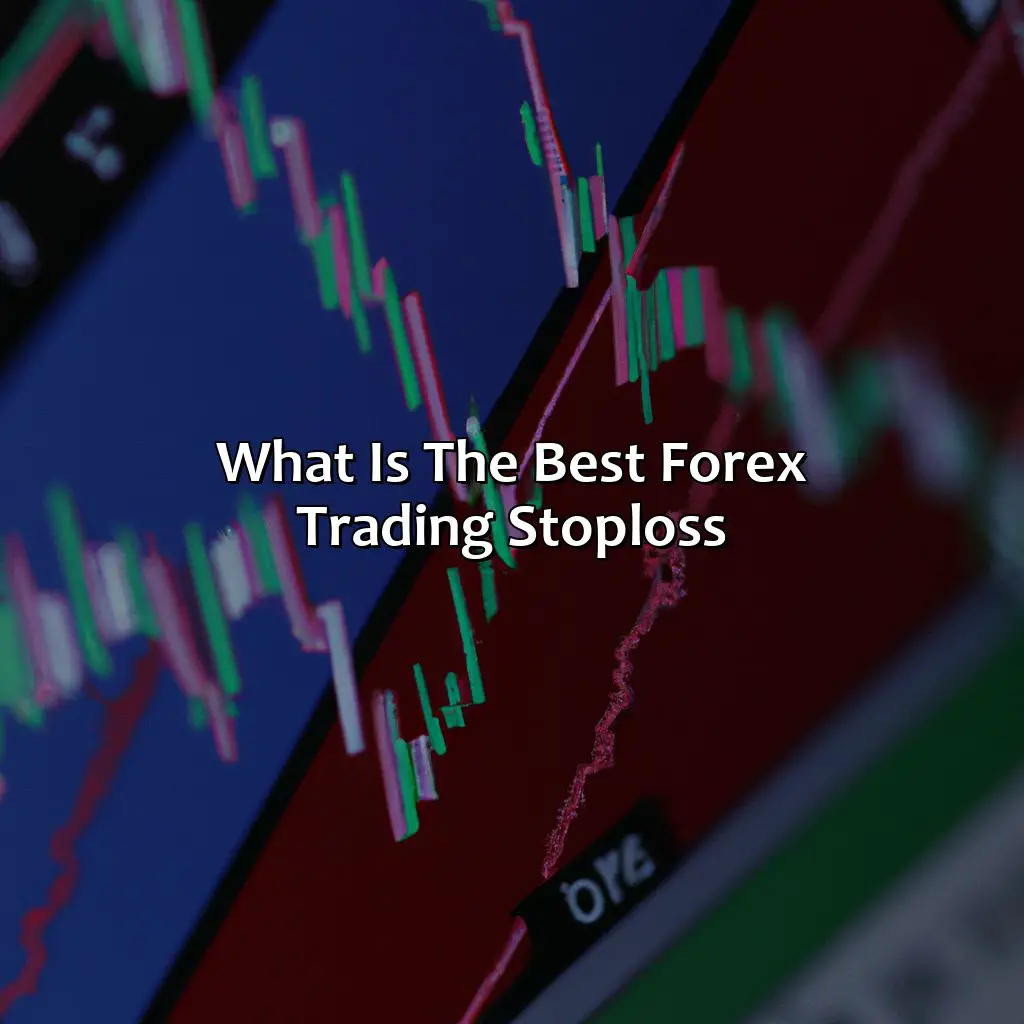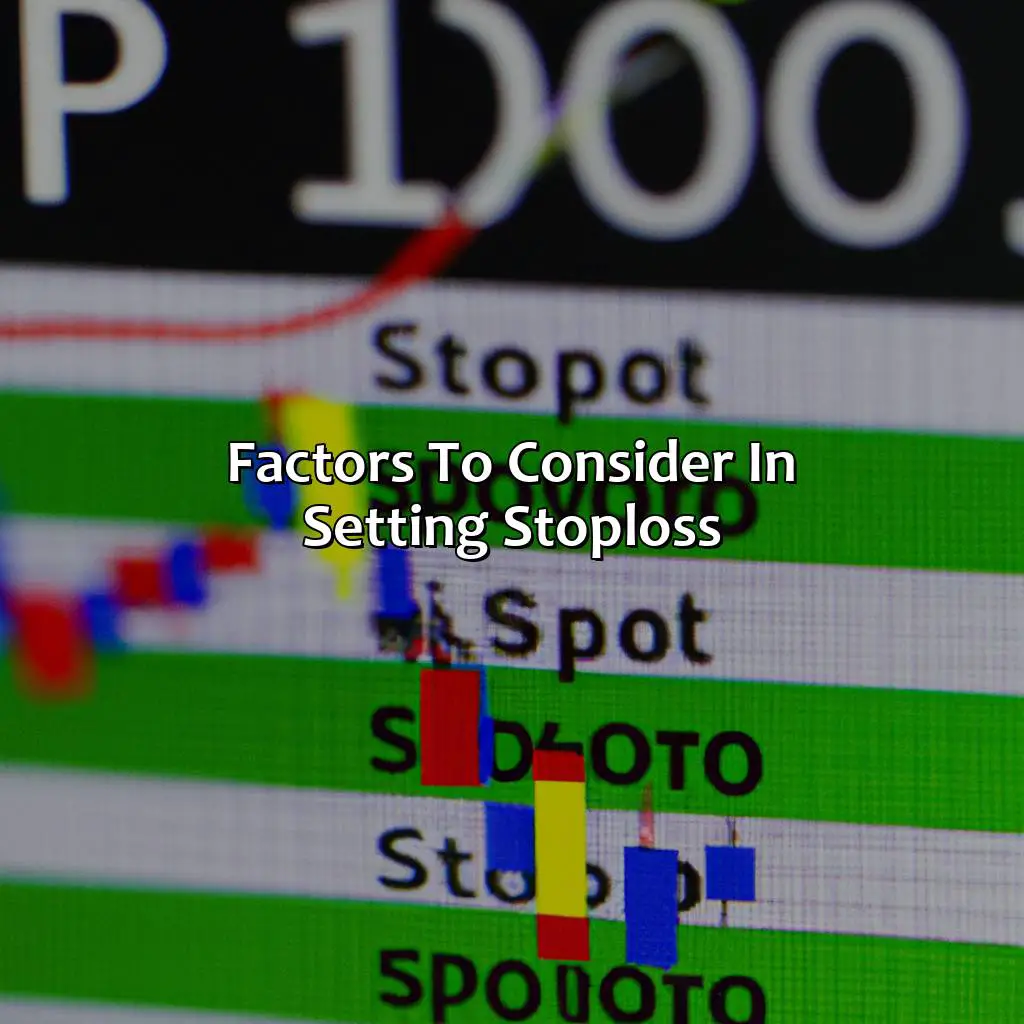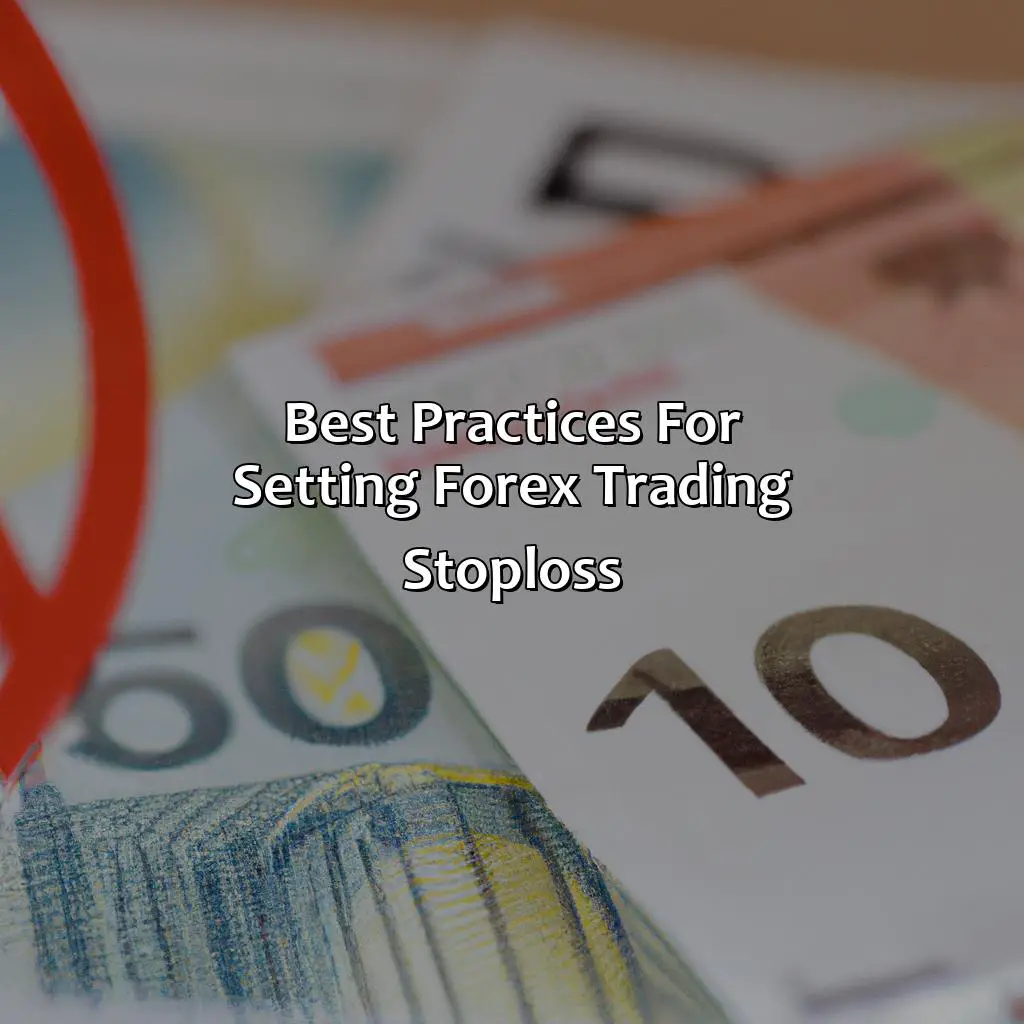
Key Takeaway:
- Forex trading stop-loss is an essential tool for managing risk and preventing losses in the highly volatile forex market. The stop-loss helps traders limit their losses to a predetermined level and avoid emotional trading decisions that can lead to catastrophic losses.
- Factors such as trading strategy, risk appetite, market analysis, technical analysis, chart patterns, candlestick analysis, price action, trend lines, and support and resistance must be considered when setting stop-loss levels.
- There are three main types of stop-loss orders: fixed stop-loss order, trailing stop-loss order, and guaranteed stop-loss order. Traders must choose the most appropriate type of stop-loss order for their trading style and risk management strategy.
- Best practices for setting forex trading stop-loss include determining risk-reward ratio, avoiding emotional trading decisions, and regularly reviewing and adjusting stop-loss levels. Traders must also have a clear exit strategy and be prepared for margin calls and trade management.
Understanding Forex Trading Stop-Loss

Photo Credits: forexbrokerreport.com by Paul Sanchez
Forex trading can be risky, and stop-loss is a crucial tool used for risk management. A stop-loss ensures that a trader minimizes their losses by automatically closing a trade when the price reaches a predetermined threshold. It is imperative to set a stop-loss at the appropriate level to limit losses and optimize gains.
When setting a stop-loss, a trader must consider the market volatility and the potential for price fluctuations. It is important to set a stop-loss that balances the risk of losing capital with the opportunity for profit. Moreover, a trailing stop-loss is an effective technique that adjusts the stop-loss level with the direction of the trade.
To avoid unnecessary losses, it is essential to keep an eye on the trade and update the stop-loss level as the market conditions change. By doing so, a trader can prevent significant losses while remaining in the market to capitalize on potential profits.
According to the Forex trading platform IG, a study conducted on 12 million trades found that placing a stop-loss too close to market price can lead to losses due to market noise. Therefore, it is crucial to set a sensible stop-loss level to prevent premature stop-outs.
In summary, stop-loss is a critical tool in forex trading for managing risks and preventing significant losses. Setting a sensible stop-loss level while considering market volatility and using trailing stop-loss techniques can optimize gains while balancing the risk of losing capital.
Factors to Consider in Setting Stop-Loss

Photo Credits: forexbrokerreport.com by Dennis Carter
Set the best stop-loss in forex trading? Consider multiple factors! Trading strategy, risk appetite, market analysis, technical analysis, chart patterns, candlestick analysis, price action, trend lines, and support and resistance all have a role.
Maximize your trading profits? Be aware of market conditions and volatility. Then, adjust your trading strategy and risk appetite. Let’s delve deeper into two sub-sections: volatility and market conditions, and trading strategy and risk appetite.
Volatility and Market Conditions
The market’s volatility and rapidly changing conditions can greatly affect Forex trading’s success. Placing the stop-loss orders helps control risk and limit losses, but it must be done with careful consideration of the market volatility.
Different market conditions reveal diverse levels of price movements commonly known as implied volatility. When setting stop-loss orders, traders should consider the level of implied volatility at various price ranges, focusing on narrowing or widening stops when required.
Volatility is also influenced by news releases and other events that can create sudden movements in currency prices. Traders need to adjust their stop-loss orders based on such market-changing conditions.
Proper management of risk control necessitates taking into account additional factors such as economic indicators, global news events, and trading strategies with clearly defined entry and exit rules to calculate the ideal position size considering stop loss placement.
Pro Tip: The changes in market conditions imply frequent modifications to your strategy. Always review and adjust your stop-loss levels regularly to stay on top! Don’t let your risk appetite be bigger than your trading strategy – it’s a recipe for disaster.
Trading Strategy and Risk Appetite
Every Forex trader needs to have a trading strategy in place and must also be aware of their risk appetite. Your trading strategy outlines the plan for buying and selling currencies to achieve your financial objectives while taking risks into consideration. Risk appetite is your willingness to take on risks associated with forex trading. It helps traders decide how much money they are comfortable risking per trade, and within what range of pips they may tolerate before exiting a trade. A sound understanding of these two factors can enable Forex traders to make informed trading decisions that align with their goals, risk tolerance and investment philosophy.
To develop a successful trading strategy, one needs to understand the market dynamics, how it reacts and moves under various conditions such as economic news releases, time zones, etc. It’s crucial to identify favorable setups that offer high potential profit margins while minimizing risks by placing stop-loss orders at strategic points. In managing risks through strategies involving stop-loss orders properly, individuals will limit losses in unfavorable scenarios.
Moreover, risk appetite is an essential aspect of forex trading as it determines a trader’s maximum liability per trade or portfolio overall. This approach involves balancing higher reward opportunities against greater volatility and potential significant loss. Reviewing historic trades and their outcomes can help make more informed choices on future positions aimed at increasing profitability.
It is recommended that traders use both Technical Analysis (TA)and Fundamental Analysis (FA)to discover varying patterns in price movements of each currency pair while having rigid control over leverage ratios. By focusing on a well-planned strategy based on reliable analysis tools like these leads to long-term growth opportunities rather than short-term gains.
An experienced forex trader remarkably reviews their trading history regularly closely, notice where they lost profits due to emotional decisions instead of fact-driven decision-making processes before developing any new plans based on these insights.
Choosing the right stop-loss order type can be the difference between success and trying to explain to your spouse why the family vacation has been canceled.
Different Types of Stop-Loss Orders

Photo Credits: forexbrokerreport.com by Andrew Smith
To comprehend stop-loss orders for currency trading, check out the section on Types of Stop-Loss Orders. It covers Fixed, Trailing, and Guaranteed Stop-Loss Orders. Each one offers a distinctive way to manage risk and decrease losses.
Keywords like order types, stop loss, trailing stop, take profit, stop limit order, and hedging can help understand each sub-section’s advantages.
Fixed Stop-Loss Order
Setting a certain price level to limit potential losses is known as a fixed stop-loss order in forex trading. This type of trade order is prevalent among traders who wish to keep their losses at a predetermined value without taking regular market fluctuations into account.
A fixed stop-loss order helps traders limit and manage the risk associated with their positions. After initiating the trade, the trader would set an exact price point or value where they want to exit the market if it moves against them, resulting in a fixed loss amount.
Traders who have a specific profit target in mind may use fixed stop-loss orders. They can stay in the position until they reach their expected profit target without being swayed by minor market volatility.
Interestingly, some traders use fixed stop-loss orders in conjunction with advanced applications such as technical indicators or algorithmic trading bots that automate trades once their selected criteria are met.
Incorporating a fixed stop-loss order could lead to decreased profits over time according to studies done by Investopedia. However, it does not necessarily indicate that accurate trade decisions cannot be made while using this technique for limiting losses efficiently during adverse market conditions and other unpredictable events affecting currency pairs traded on forex platforms.
Keep your losses in check with a trailing stop-loss order – the security blanket of forex trading.
Trailing Stop-Loss Order
A trailing stop-loss order is a type of order that allows a trader to lock in profits while minimizing losses. It is set at a specific distance from the market price and moves in the trader’s favor as the market moves in their direction. This means that if the market moves against them, the stop-loss is triggered at the new price level, thereby limiting potential losses.
By using a trailing stop-loss order, traders can automate their trading strategy and remove emotions from their decision-making process. It also allows them to benefit from sudden changes in the market without having to monitor their trades constantly. Additionally, a trailing stop-loss order can be used in both long and short positions.
One unique feature of a trailing stop-loss order is its ability to move with the market. This is because the distance between the current price and stop loss level changes as the market moves. Another advantage of using this type of order is that it gives traders flexibility in setting their risk levels since they can adjust it depending on how volatile they expect the market to be.
To make the most out of a trailing stop-loss order, traders should follow some best practices such as determining a favorable risk-reward ratio, avoiding emotional trading decisions, and regularly reviewing and adjusting their stop loss levels based on changing market conditions.
Guaranteed stop-loss orders: because nothing says ‘I don’t trust my trading skills’ like paying extra for insurance.
Guaranteed Stop-Loss Order
A guaranteed stop-loss order is a type of protective measure that forex traders can use to limit the potential losses on their positions. With this order, traders can set a specific price level at which their position will automatically be closed, regardless of any market fluctuations or gaps. This provides an extra layer of security for traders, especially during volatile market conditions.
Unlike other types of stop-loss orders that may experience slippage or requotes, a guaranteed stop-loss order ensures that the position will be closed at the exact price level specified by the trader, no matter what happens in the market. However, it’s worth noting that this type of order usually comes with a wider spread and a fee, which should be factored into the overall trading costs.
Pro tip: When setting a guaranteed stop-loss order, try to strike a balance between protecting your capital and avoiding getting stopped-out too soon due to minor price fluctuations. Consider using technical analysis and risk management tools to help you make informed decisions about where to place your stops.
Setting the perfect stop-loss is like Goldilocks trying to find the right porridge; not too tight, not too loose, just the right size for your position and risk-to-reward ratio.
Best Practices for Setting Forex Trading Stop-Loss

Photo Credits: forexbrokerreport.com by Stephen Gonzalez
To master Forex Trading Stop-Loss Best Practices, first determine Risk-Reward Ratio. Avoid Emotional Trading Decisions by following Trading Psychology, Discipline, Emotion Management, and Rules. Regularly review and adjust Stop-Loss Levels with Backtesting, Historical Data, Live Trading, Demo Trading, Automated Trading, and Manual Trading.
Determine Risk-Reward Ratio
To effectively manage risk in Forex trading, it is important to determine the risk-to-reward ratio. This ratio helps traders to assess the potential profit or loss in a trade relative to its risk. It also enables them to set a stop-loss level that protects their capital and ensures they limit their losses in case of market volatility or sudden price movements.
Traders must first know how much they are willing to risk before entering a trade based on their account balance and overall trading strategy. Once this is established, they can use technical analysis tools and market trends to calculate the potential reward for each trade. The ideal target is typically three times higher than the amount at risk.
Additionally, traders must consider the type of stop loss order they will use based on their overall strategy and Risk-Reveard Ratio. Different types of Stop-Loss Orders include Fixed Stop-Loss Order, Trailing Stop Loss-Order and Guaranteed Stop-Loss Order.
To further emphasize this point, a trader who risks $100 must aim for a minimum return of $300 using a 3:1 Risk-Reward Ratio. If the trade goes against them resulting in losses ranging from $25-$50 while gaining $75-$150 in returns or more if luck runs his/her way upon market close then the trade was productive.
Trading psychology is as important as market analysis – a disciplined approach and emotion management can mean the difference between profit and panic.
Avoid Emotional Trading Decisions
Emotions play a critical role in forex trading psychology and can lead to undisciplined trading decisions. To avoid emotional trading decisions, traders should develop strict and consistent trading rules that regulate their behavior. It is essential to stick to one’s trading plan, even when market conditions change or personal financial needs arise.
By implementing strict rules and adhering to them, traders can remain more objective and make rational decisions based on facts instead of emotions. Traders should consider the impact of fear and greed on their decision-making process and have a disciplined approach to manage these emotions.
One way traders can manage emotions is through developing a routine for checking their trades regularly without making impulsive decisions. Establishing fixed stop-loss orders can also help remove emotional factors from the decision-making process since it eliminates the need for continuous monitoring.
To further reduce emotional involvement in trading decisions, traders must always keep in mind their risk-reward ratio and maintain discipline with respect to leverage usage. It is crucial to trade with caution and use only a small percentage of overall available funds.
Effective emotion management techniques such as those mentioned above can help Forex traders limit the adverse effects of psychological biases on their performance. By following such approaches consistently, they enhance their odds of success while steadily amassing wealth in this highly volatile but lucrative niche.
Regularly reviewing and adjusting stop-loss levels is like maintaining your car – neglecting it will eventually lead to a breakdown.
Regularly Review and Adjust Stop-Loss Levels
Reviewing and modifying stop-loss levels is an essential aspect of forex trading risk management. It ensures that traders can limit their losses in case of unfavorable market conditions or unexpected price movements. To make suitable adjustments to stop-loss levels, traders need to analyze the factors affecting the currency pair’s performance and assess their trading strategy’s effectiveness continuously.
- Use Historical and Real-Time Data: Traders should utilize backtesting strategies to analyze how a currency pair has performed under different market conditions. They should also use real-time data, such as economic news releases and political developments, to assess potential risks and adjust their stop losses accordingly.
- Evaluate Trading Strategy Effectiveness: Traders must continuously evaluate their trading strategy’s effectiveness in different market scenarios and adjust stop-loss based on its performance. This process enables traders to maximize profits while reducing risks, leading to better results in live trading accounts.
- Practice with Demo Trading Accounts: Before implementing changes in live trading accounts, traders must test new strategies using demo accounts. This testing allows them to identify any inefficiencies in their approach without risking financial loss.
- Use Automated Trading Systems: Traders who use automated trading systems must review their algorithms’ performance continuously and make adjustments as needed based on historical data inputs. This continuous adjustment of stop-loss orders helps optimize the system’s efficiency.
Relevant news items may significantly affect the forex markets’ price movement, which can cause stop-loss orders to be triggered prematurely or not at all. By following these four steps consistently, traders can keep track of potential risks continually while minimizing potential losses. It is crucial for all forex traders always to adjust stop-loss levels according to changing market conditions without any hesitation.
According to a recent report published by Reuters, forex trader takes only 5% of the time adjusting Stop-Loss levels during daily FX trades.
Some Facts About The Best Forex Trading Stop-Loss:
- ✅ A stop-loss is a risk management tool used to minimize losses in forex trading. (Source: Investopedia)
- ✅ The placement of a stop-loss should be based on the trader’s risk tolerance and the market conditions. (Source: DailyFX)
- ✅ Using a trailing stop-loss can help protect profits by adjusting the stop-loss level as the trade moves in favor of the trader. (Source: FXCM)
- ✅ It is important to avoid setting stop-losses too close to the entry price, as this can result in premature exits and missed profit potential. (Source: BabyPips)
- ✅ Successful forex traders often use a combination of stop-loss orders and price targets to manage their risk and maximize their profits. (Source: The Balance)
FAQs about What Is The Best Forex Trading Stop-Loss?
What is the best forex trading stop-loss?
There are different methods to determine the best stop-loss for forex trading, depending on the trader’s style, risk appetite, and market situation. Here are some popular options:
- Percentage Method: This method sets the stop-loss at a fixed percentage of the asset price, such as 2%, 5%, or 10%. This approach is useful for intraday trading and volatile assets like options, futures, and commodities, but may not always account for technical support and resistance levels.
- Moving Averages Method: This method uses the moving averages of the price data to set the stop-loss at a level that reflects the trend and reduces false signals. This approach is suitable for long-term trading and liquid stocks but may require more technical analysis and monitoring.
- Trigger Price Method: This method sets the stop-loss at a level that triggers the selling automatically when the asset price reaches a specific point. This approach is useful for illiquid stocks and trading halts, where manual selling may not be feasible.
How does margin trading and leveraging affect the stop-loss strategy?
Margin trading and leveraging allow traders to borrow money from the broker to increase their buying power and potential profits. However, they also increase the risk of losses and may require higher margins for statutory costs and interest. Therefore, it is essential to adjust the stop-loss strategy accordingly and avoid overleveraging or risking more than one can afford to lose.
What is the role of brokerage in setting the stop-loss?
The brokerage may provide some guidance or recommendations on the stop-loss strategy, but ultimately it is the trader’s responsibility to decide on the appropriate level based on their risk tolerance and market analysis. The brokerage may also charge some fees for executing the stop-loss orders, which should be factored into the trading costs.

